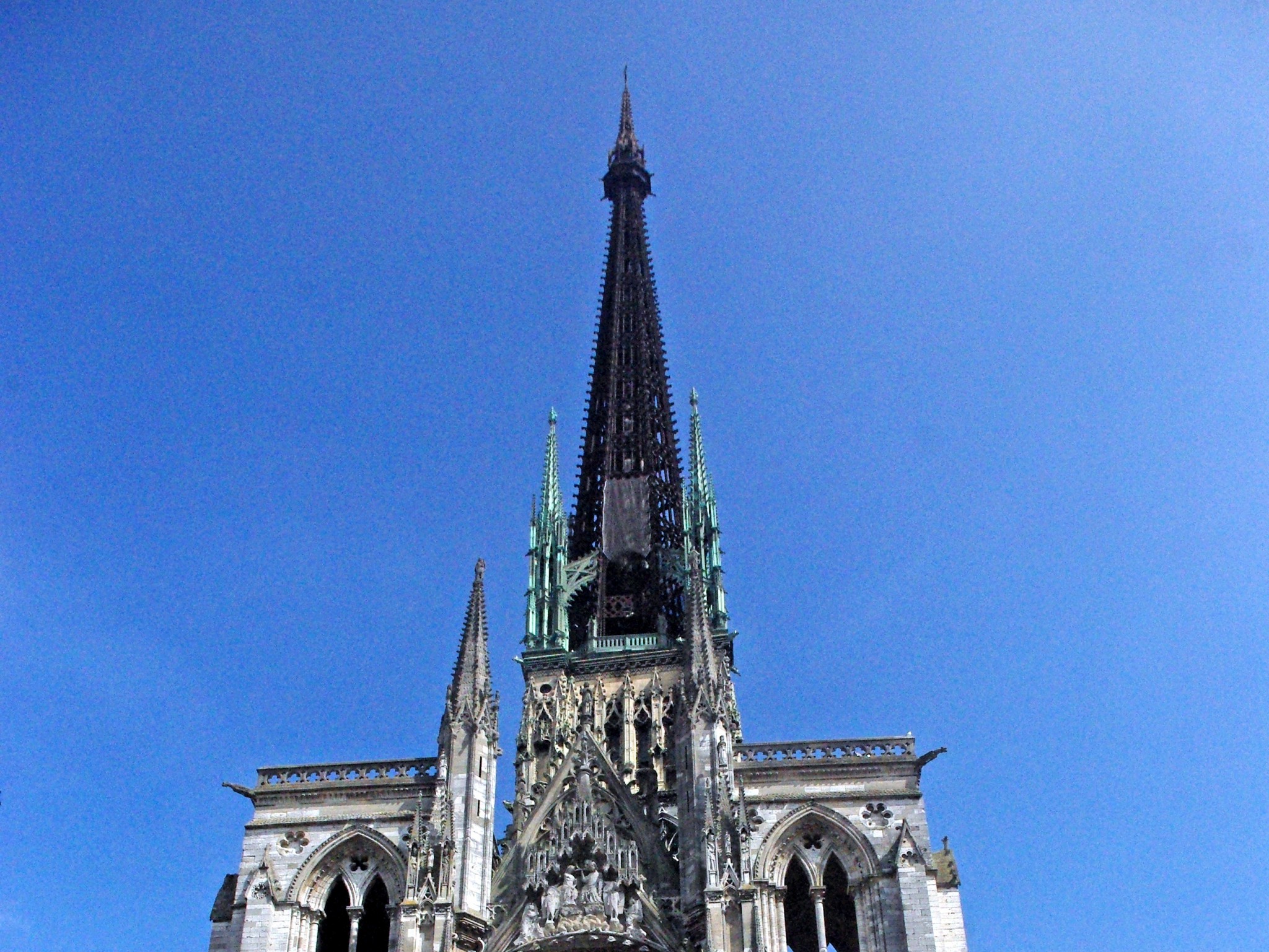The Tour Lanterne (lantern tower) and its soaring spire makes the cathedral of Rouen the tallest cathedral in France. Visible from many areas in town, the 151 metre-tall structure dates back to the 19th century and replaces a former Renaissance spire that was struck by lighting.
The Tour Lanterne of Rouen Cathedral: a bit of History
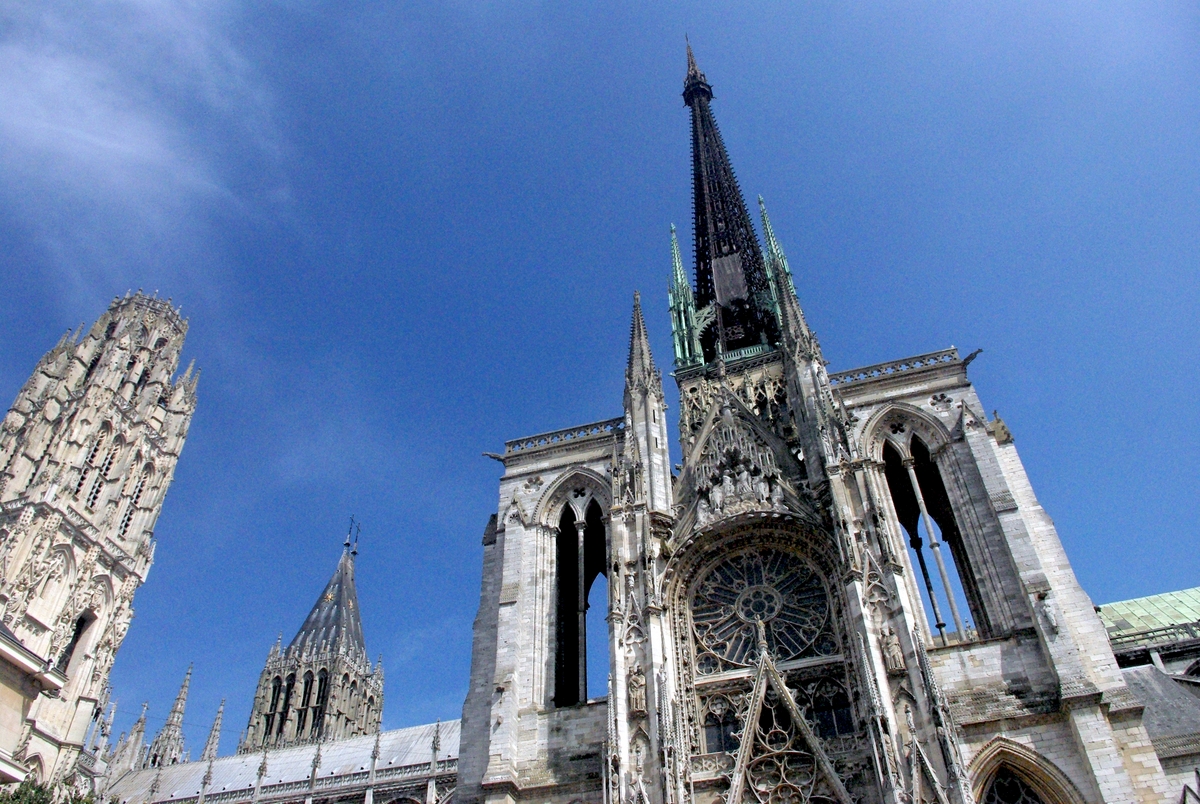
Situated over the crossing of the transept, the square central tower dates back to the year 1200 and replaced an older tower which was materially damaged in 1117, when its spire of stone was struck by lightning. The new tower was topped by by another spire of wood, which was also destroyed at the beginning of the 16th century. A fire, arising from the negligence of plumbers employed to repair the lead-work, was the cause of its ruin. To repair the lantern tower, the King contributed 12,000 francs, the chapter gave a portion of their revenue, collections were made throughout the kingdom; and Pope Leo X authorised the sale of indulgences, a measure, which, at nearly the same period, was adopted for the building of St. Peter’s at Rome.
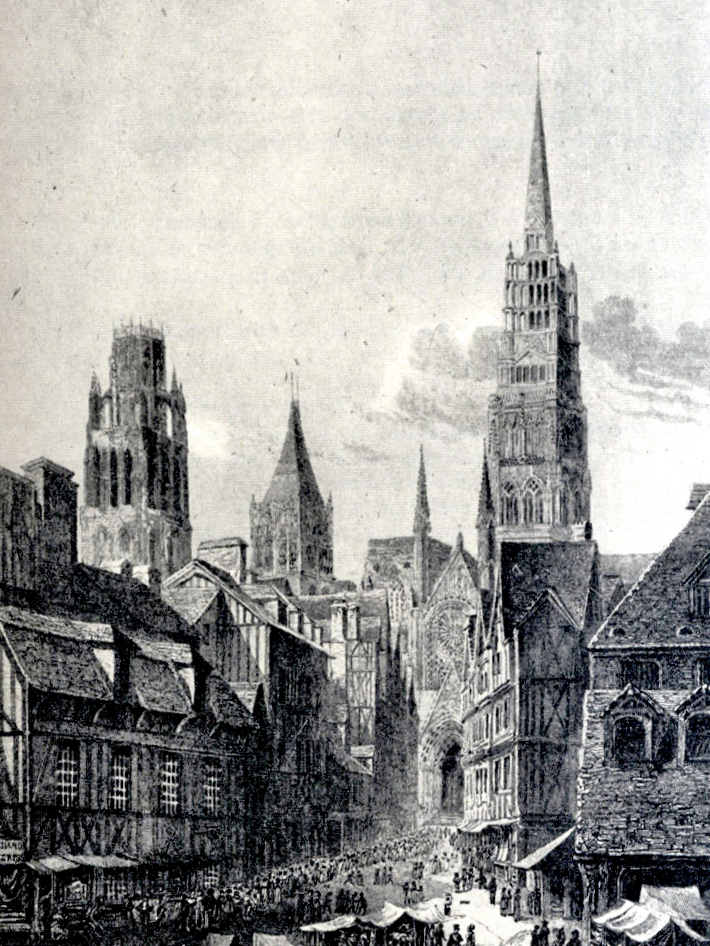
The spire was then raised in lead-covered timber in Renaissance style. It was the second of wood, but the third in chronological order. On the 15th September 1822, thunder hit the spire at 5am. The structure eventually collapsed at 7am.

From the elaboration of drafts in 1823, it took some 50 years to complete the existing cast iron spire on the lantern tower. Four beautiful copper-clad wooden turrets were added by architect F. Marrou between 1880 and 1884 around the spire at the base of the lantern tower. This was the last addition of major importance to the structure of the cathedral.
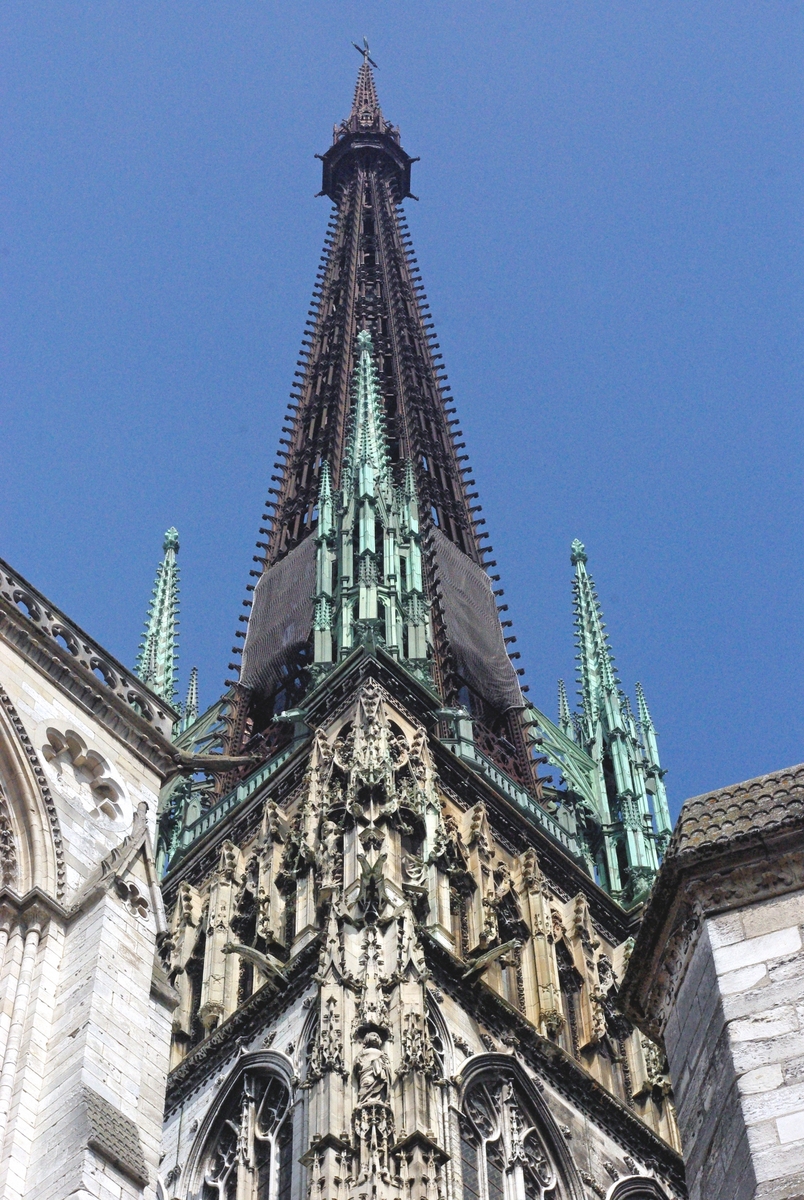
The North-east turret weighing 26 tons fell during the violent storm of December 1999 and damaged the choir and the stalls in its fall. The three other turrets were removed for maintenance and safety purposes before being replaced in 2012.
My book recommendation!
Its name? Simply:
Gothic: Architecture, Sculpture, Painting by Rolf Toman, Publisher: Ullmann
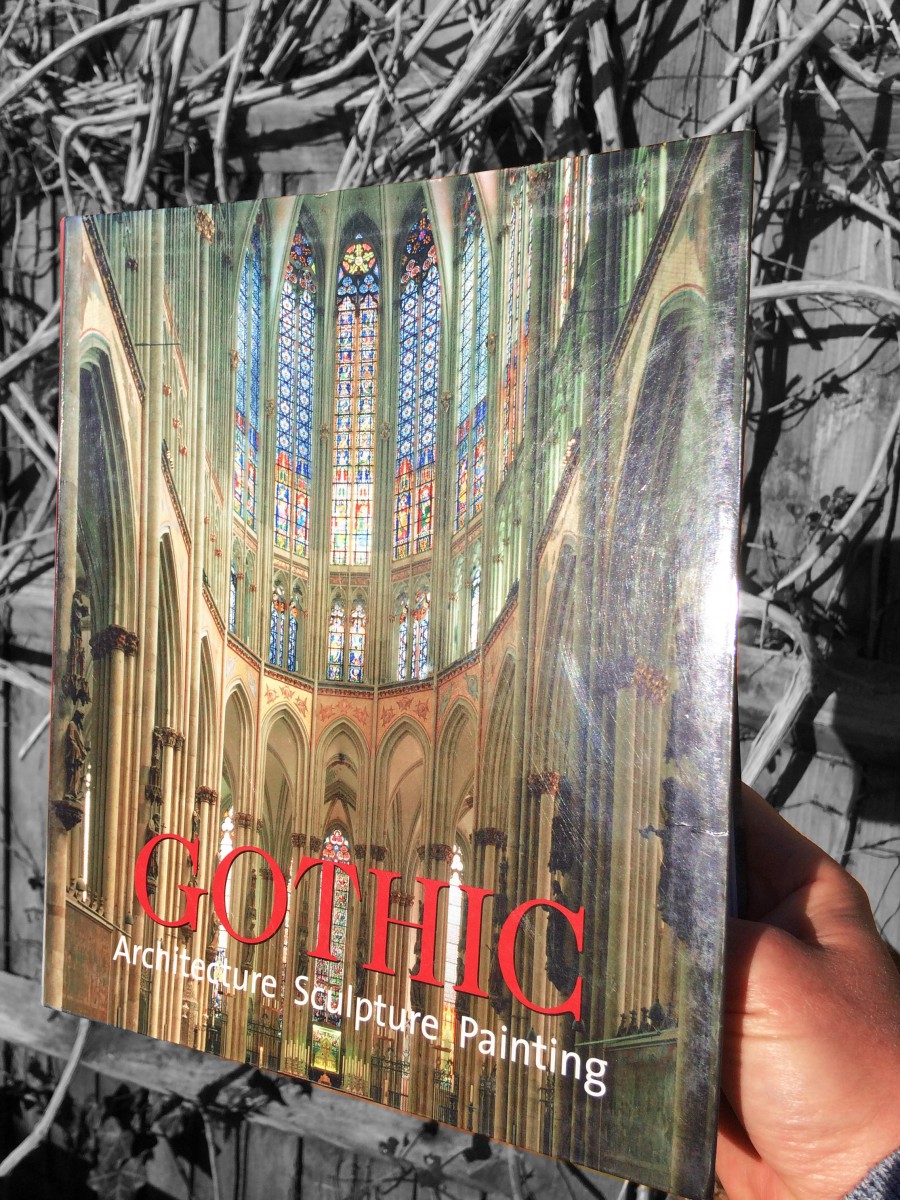
This book has been for me a great resource that helped me better understand the Gothic movement in art from the 12th century to the Renaissance. An architectural style that first originated from France and spread all over Europe.
Over 500 pages it focuses on the development of Gothic architecture with many illustrations and photographs, but not only. I’ve also found interesting the in-depth discussion of the most diverse art forms, including painting, sculpture, metalwork and even book illumination! It also includes specific coverage of the Cathars’ Heresy and the Papal Palace in Avignon. And, of course, it mentions the cathedral of Notre-Dame de Rouen!
This is definitely the book I recommend if – like me – you love everything about Gothic such as churches, gargoyles, stained glass, flying buttresses and so much more.
The Lantern Tower from the inside
Four clustered pillars support the lantern tower above the crossing of the transept. The square tower is adorned in its four sides with an lower and an upper gallery with windows filled with white glass which shed a soft and uniform light over the whole space. The presence of a lantern tower at the crossing of the transept is a frequent feature in churches in Normandy (St. Ouen in Rouen, Bayeux) and in England (Gloucester, Salisbury, Winchester).
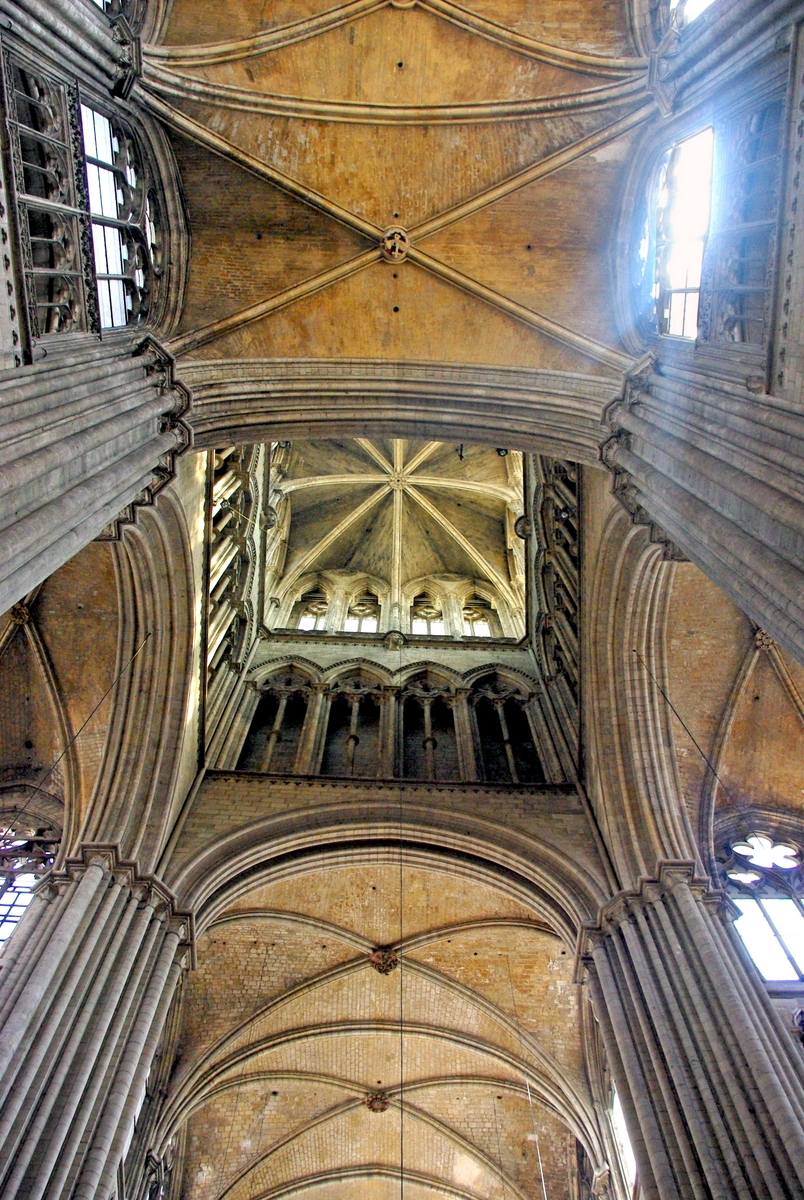
Facts about the Lantern Tower of Rouen Cathedral
Reaching a height of 151.2 metres, Rouen Cathedral was the tallest building in the world from 1876, a record yielded to Cologne cathedral just four years later, in 1880. The spire still makes Rouen Cathedral the tallest of all French cathedrals and churches.
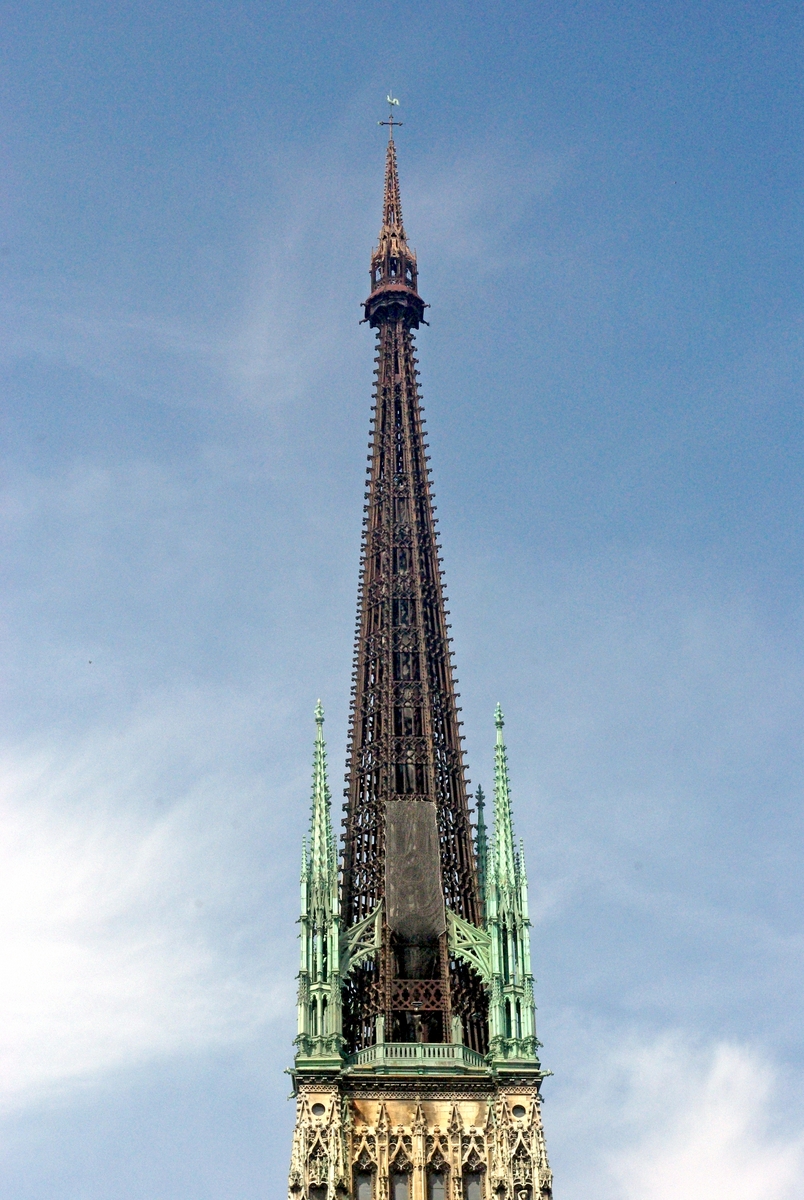
At the very top of the spire is a weathercock:
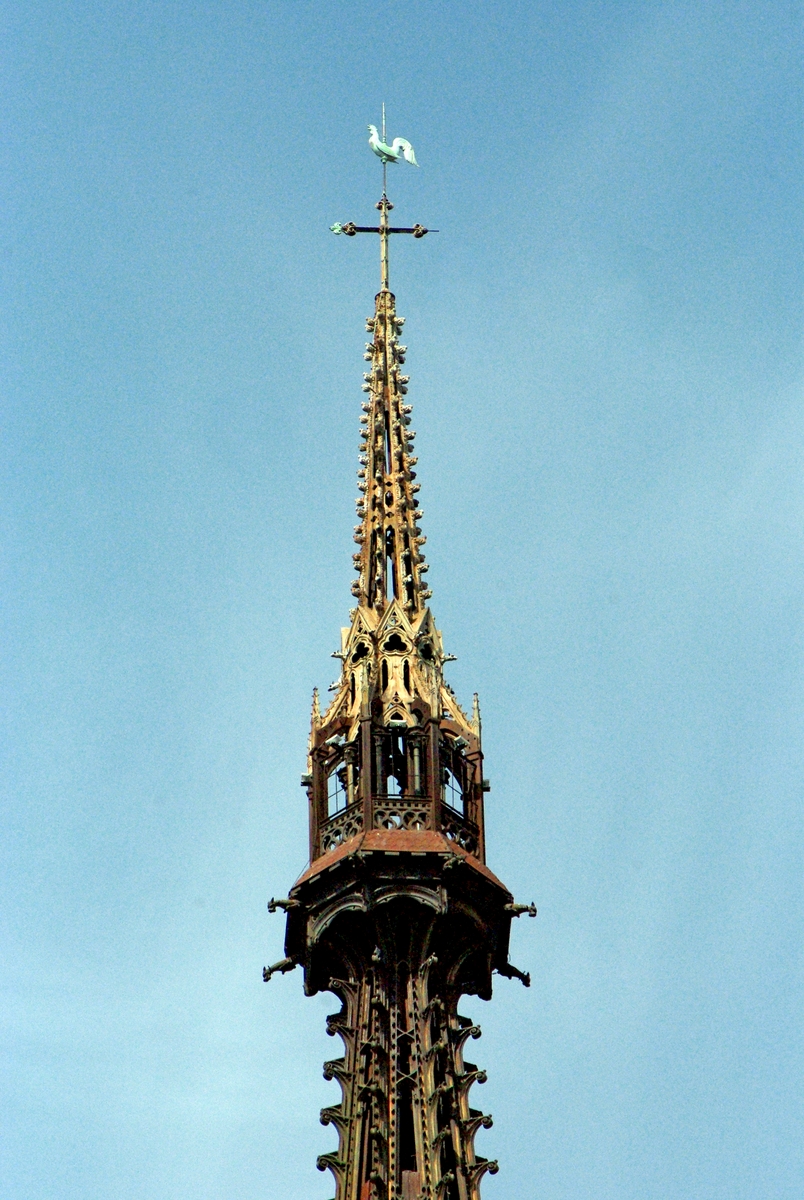
The spire of the cathedral is visible from many parts of the town of Rouen. It outmatches all the bell-towers and spires of the town, from the Tour de Beurre, Tour Saint-Romain, Saint-Maclou church to the lantern tower of Saint-Ouen.
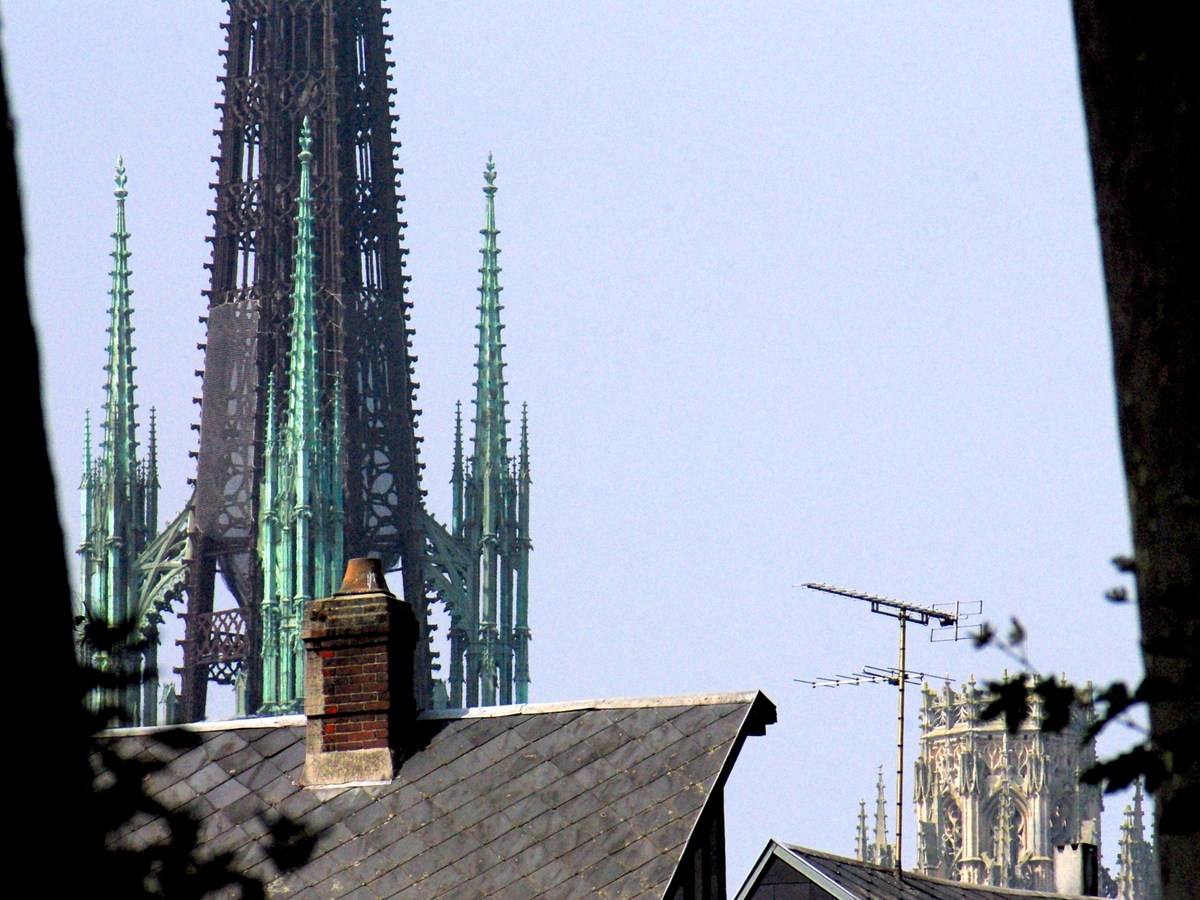
Find out more about Rouen Cathedral.
For more information, visit the Rouen Tourist Board website.

